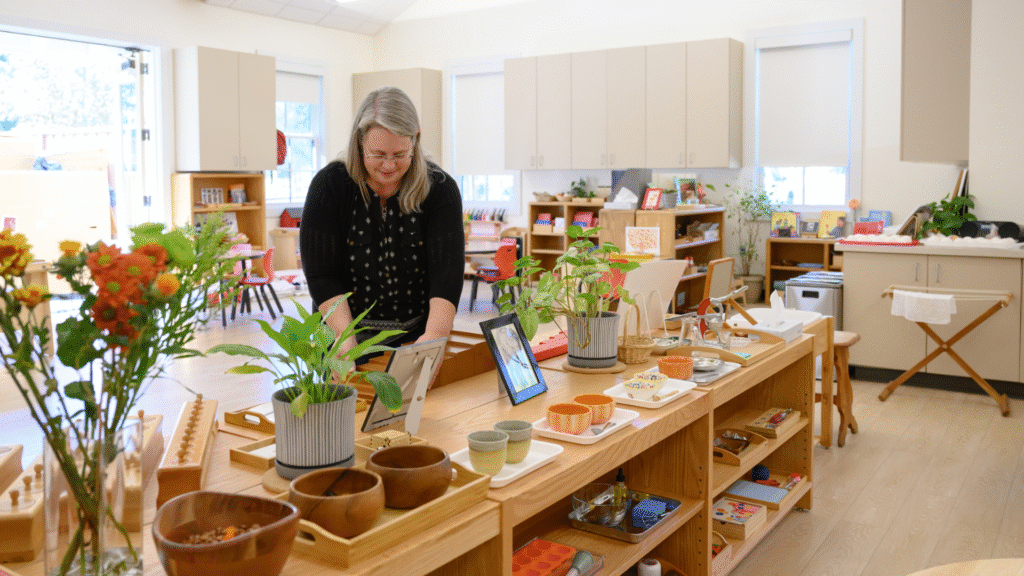It is that time of year again, and teachers around the world are hard at work—preparing environments, cleaning, polishing, replacing broken or missing pieces, adding new materials, and connecting with the space where we will soon, if we haven’t already, welcome children in. This preparation is a big part of the work of the Montessori adult. The environment is the teacher of the child, and it needs to be considered thoughtfully. This preparation requires reflection and recognition that we can only prepare just enough. The environment belongs to the children, and we need to be ready to adapt and be flexible because the environment can only truly be prepared when we spend time observing those in it.
The environment is much more than just the physical space, the placement of shelves, the sequence of materials, or where we put the book corner. It’s not just how the space looks; it’s also about how it feels. We call this the spiritual environment. This spiritual environment is a lot harder to prepare. Are we ready to really listen, to champion, to love, to celebrate, and to honor every unique child in our community? Are we inclusive in allowing the children important freedoms and to develop a sense of belonging? A prepared environment is a gift to the child, and even the most beautiful environments can be empty if there is no joy.
The beginning of the school year requires extra care in creating an emotionally prepared environment, especially since this time can bring big emotions, particularly for younger children. When I was in the classroom, welcoming children was both exciting and exhausting. I always kept a few simple strategies in my back pocket to support those who needed a little more love.
Three Tips to Support Children Emotionally
- Send a quick and easy survey to parents to learn more about their child.
Getting to know both new and returning students a little better is key to creating that emotionally safe environment. Ask about their interests, their passions, their vacations, etc. Knowing these tidbits ahead of time will help you prepare for ways you can engage and connect with each child in a meaningful way.
- Introduce them to the class pet.
If a child comes in with big emotions? Introduce them to the class pet. It’s amazing how Bubbles the fish or Maria the turtle can help calm a child. Sure, the pet might get overfed, but it’s worth it!
- Help them make a buddy.
The beauty of vertical grouping is that children understand best the needs of their peers. Assign a special friend or a tour guide to help connect the child to the environment and others. Without children, our environments are just materials—it is the living, breathing humans that make the environment special.
Though we may not be able to see the spiritual environment, it is where the true Montessori philosophy lives. Take the time to prepare and nurture it, and watch the beauty unfold as the children take ownership of their space. After all, the environment is for them, not for us.
When I am in the midst of children, I do not think of myself as a scientist, a theoretician. When I am with children, I am a nobody, and the greatest privilege I have when I approach them is being able to forget that I even exist, for this has enabled me to see things that one would miss if one were somebody – little things, simple but very precious truths.
– Maria Montessori, Education and Peace, p. 81


